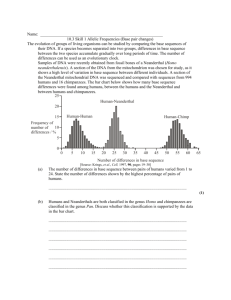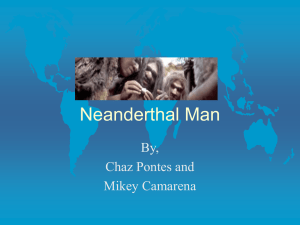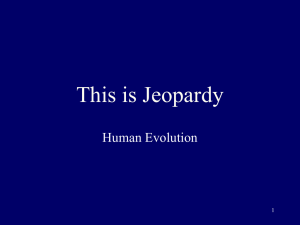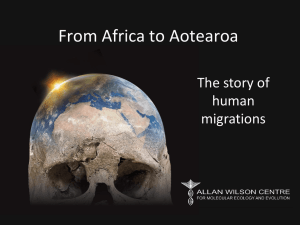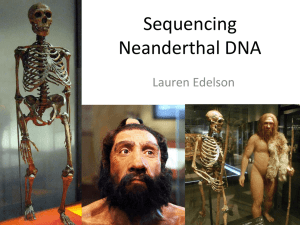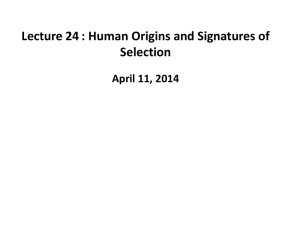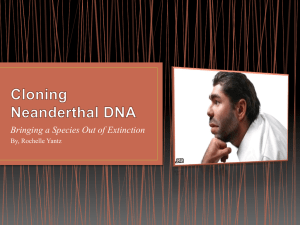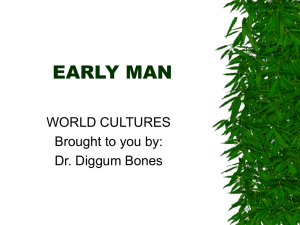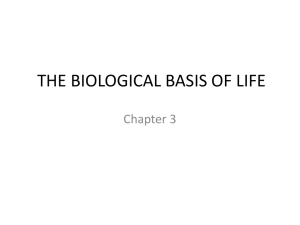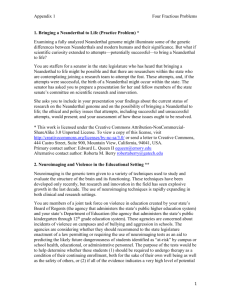The size of the chunks of Neanderthal DNA shed light on - e
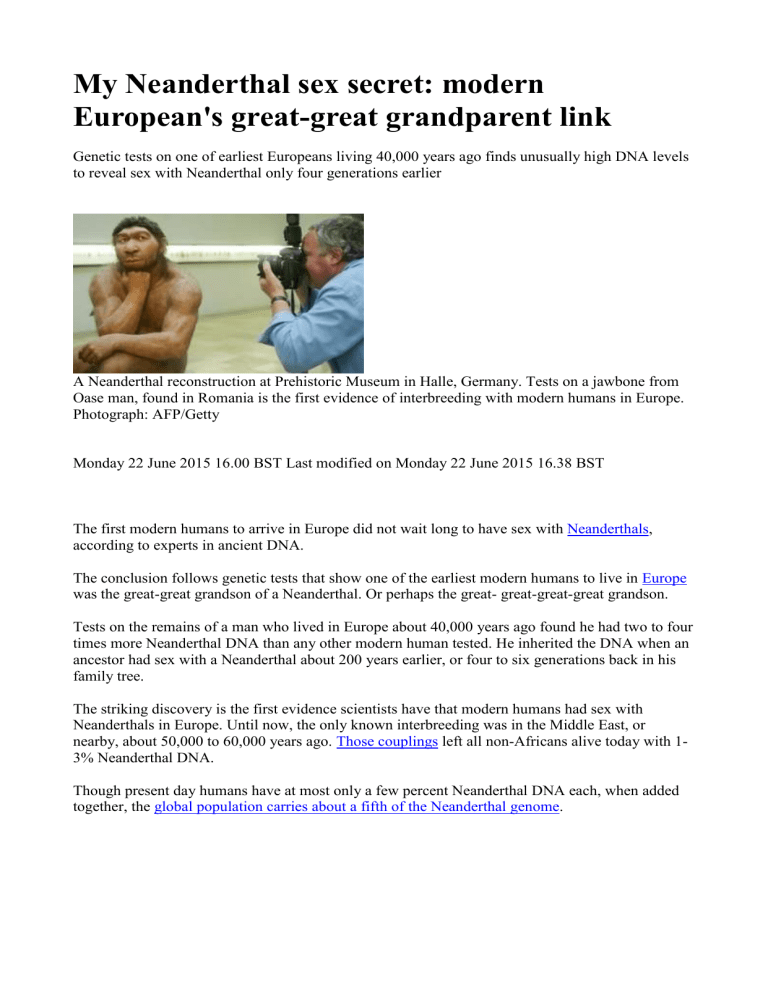
My Neanderthal sex secret: modern
European's great-great grandparent link
Genetic tests on one of earliest Europeans living 40,000 years ago finds unusually high DNA levels to reveal sex with Neanderthal only four generations earlier
A Neanderthal reconstruction at Prehistoric Museum in Halle, Germany. Tests on a jawbone from
Oase man, found in Romania is the first evidence of interbreeding with modern humans in Europe.
Photograph: AFP/Getty
Monday 22 June 2015 16.00 BST Last modified on Monday 22 June 2015 16.38 BST
The first modern humans to arrive in Europe did not wait long to have sex with Neanderthals , according to experts in ancient DNA.
The conclusion follows genetic tests that show one of the earliest modern humans to live in Europe was the great-great grandson of a Neanderthal. Or perhaps the great- great-great-great grandson.
Tests on the remains of a man who lived in Europe about 40,000 years ago found he had two to four times more Neanderthal DNA than any other modern human tested. He inherited the DNA when an ancestor had sex with a Neanderthal about 200 years earlier, or four to six generations back in his family tree.
The striking discovery is the first evidence scientists have that modern humans had sex with
Neanderthals in Europe. Until now, the only known interbreeding was in the Middle East, or nearby, about 50,000 to 60,000 years ago. Those couplings left all non-Africans alive today with 1-
3% Neanderthal DNA.
Though present day humans have at most only a few percent Neanderthal DNA each, when added together, the global population carries about a fifth of the Neanderthal genome .
Ancient human bone helps date our first sex with Neanderthals
Read more
“This is the only interbreeding in Europe that we know about so far,” said Svante Pääbo
, director of the Max Planck Institute for Evolutionary Anthropology in Leipzig, who led the study. “It shows us that the very earliest modern humans that came to Europe really mixed with the local Neanderthals here. It’s not just something that happened early on when they came out of Africa.”
Modern humans spread across Europe between 45,000 and 35,000 years ago, into land already occupied by Neanderthals. The two human forms probably shared the land for about 5,000 years before the Neanderthals died out about 35,000 years ago. What hand modern humans played in their demise is still keenly debated, but many scientists suspect modern humans out-competed the
Neanderthals for food and other resources.
Cave explorers stumbled upon the ancient jawbone of the early European man in 2002 while exploring the Oase cave in south western Romania . Though it looked modern human, it bore some subtle Neanderthal features too. Carbon dating put the remains at between 37,000 and 42,000 years old. At that age, the man is a contender for the earliest modern human known in Europe.
Facebook Twitter Pinterest
DNA taken from a 40,000-year-old modern human jawbone from the Peștera cu Oase cave in Romania reveals the man had Neanderthal ancestor only four to six generations earlier. Photograph: Svante
Pääbo, Max Planck Institute for Evolutionary
Anthropology
In the latest study, scientists used a dentist’s drill to remove a small amount of bone for genetic tests.
The results, reported in Nature , are remarkable. The man had 6-9% Neanderthal DNA, far more than
people alive today. But the amount was not the only surprise. The Neanderthal DNA was present in large chunks, meaning he had a Neanderthal ancestor in his recent past. Half of one entire chromosome was pure Neanderthal. More big chunks of Neanderthal DNA sat on other chromosomes.
The size of the chunks of Neanderthal DNA shed light on how recently the man’s ancestors bred with Neanderthals. For example, a child born from a Neanderthal father and modern human mother could inherit 50% Neanderthal DNA. But with each future generation, the Neanderthal DNA would be fragmented into ever shorter chunks. Barring further Neanderthal sex, that is.
Janet Kelso , a co-author on the study, said that analyses of the largest chunks of Neanderthal DNA found that the Oase man had a Neanderthal ancestor four to six generations back in his family history. That suggests modern humans mixed with Neanderthals soon after they first spread across
Europe. Like modern Europeans today, he also carried a smidgen of Neanderthal DNA from older couplings in the Middle East. Yet more Neanderthal DNA had crept into his genome from incidents that happened more than 200 years before he was born.
Though inter-breeding was not utterly disastrous, the mixed offspring of modern humans and
Neanderthals did not, in general, fare well. Genetic tests show that most Neanderthal DNA was rapidly lost from the modern human genome. One theory is that mixed children grew up to be less fertile, or were less likely to reach fertile age, meaning their DNA vanished quickly from the gene pool.
The Oase man did not pass his Neanderthal genes on to people alive today. Instead, he may have belonged to a group of early pioneers who settled in Europe and mixed with Neanderthals, but later died out, when other modern humans arrived.
Pääbo now wants to study more early modern humans and some of the oldest Neanderthals to glean insights into their social interactions. “We want to know if they lived together, and if the mixed kids became integrated into both Neanderthal and modern human populations,” he said.
